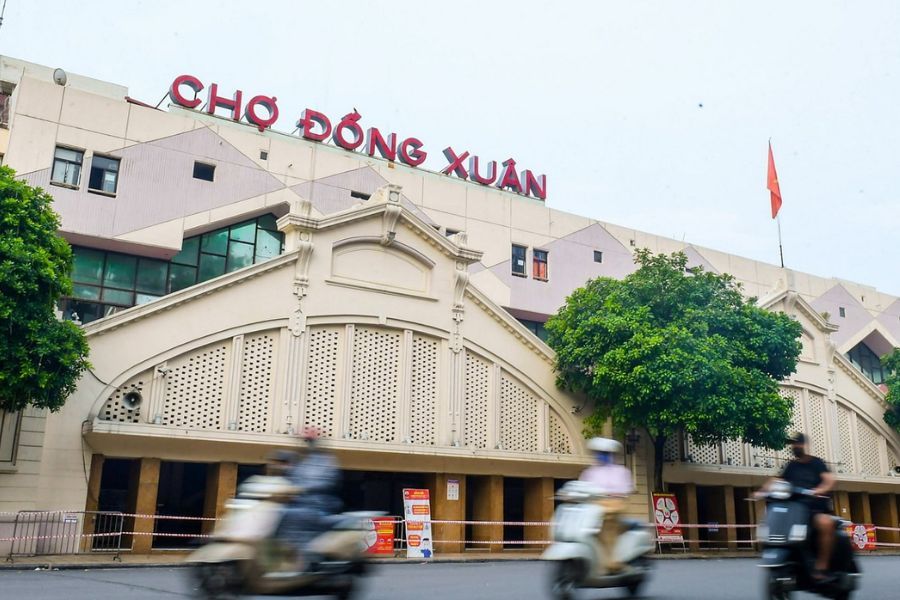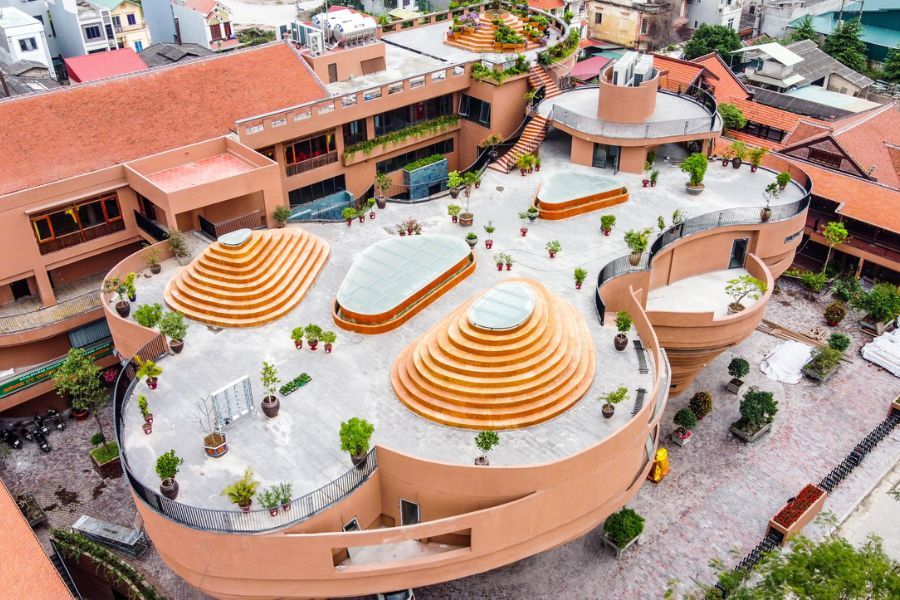A Colorful Hanoi Experience At Quang Phu Cau Incense Village
Quang Phu Cau Incense Village, located near Hanoi, is well known for its ancient incense-making traditions that occur in scenic surroundings. The village is filled with red incense sticks drying in the sun, for some good photo opportunities and cultural perspectives on this cottage industry.
Table of Contents
ToggleIntroduction To Quang Phu Cau Incense Village
Located about 35 kilometers from downtown Hanoi, Quang Phu Cau Incense Village is a hidden treasure that boasts a long-standing incense production tradition. The village is also a beautiful spectacle of red incense sticks neatly organized under the sun, attracting anyone and everyone who loves photography and culture.

By taking a trip to Quang Phu Cau, you will witness a rare form of Vietnam’s spiritual craft legacy, where you can observe the incense at all stages of production and meet the artisans who keep this important Vietnamese tradition alive. If you’re looking for a great photo opportunity or meaningful cultural experience, Quang Phu Cau will provide that authentic and unique Vietnamese travel experience.
History Of Quang Phu Cau Incense Village
Quang Phu Cau Incense Village has a long history of over 100 years, located in Ung Hoa District, Hanoi. The craft of incense making began early in the 20th century in order to meet the spiritual needs of local people and those in surrounding areas, passed down through generations, becoming part of the cultural and spiritual identity of the local community.
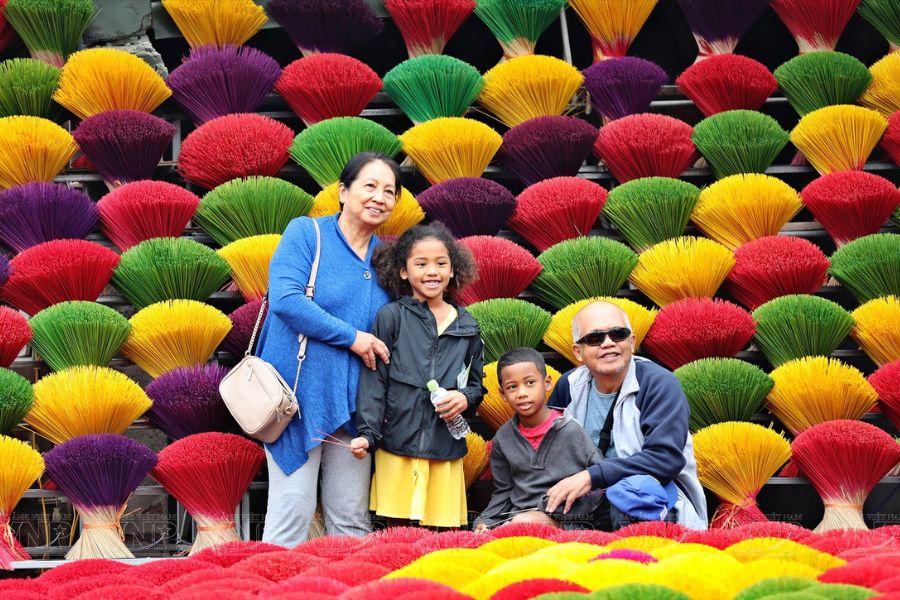
Yuans and Quintessences, the cultural and spiritual heritage of the village, not only endure but they have further developed the incense making practice to further levels, thus allowing the village to make their incense commercially viable by selling throughout the country and also exporting to other countries too.
Top 2 Iconic Attractions in Quang Phu Cau Incense Village
Quang Phu Cau Incense Village is not merely known for producing traditional incense, but it is also a cultural destination full of history, spirituality, and photo opportunities. While you might find the whole village full of charm in its daily life and incense production, there are two main places to explore – Dinh Bau and Chua Moi. They are located close enough to each other (just 550 meters) that they could all be done in one visit.

Dinh Bau (Bau Communal House)
This is an open, relaxed area that welcomes photographers and cultural travelers alike. Many people commence their excursion through the village here. In a way, it is a kind of open-air gallery, where you can see the stick displays in vivid colours and, at the same time, view and learn about the heritage of incense making. Dinh Bau was made an official city-level tourism destination on February 25th, 2023 – an important recognition for the cultural tourism landscape in Hanoi.
Chua Moi (Moi Pagoda)
Moi Pagoda is located in Dao Tu Hamlet, provides a more spacious space to work, which has picturesque scenes and a lovely sense of calm in which to play. The larger-sized courtyard and variety of angles make this a preferred location for photographers capturing the art of drying incense in the backdrop of a rustic village. Here, you usually find the locals methodically placing the red and pink incense sticks to complete your scene.
Each of these locations boasts the traditional attributes of a village while accentuating the daily rhythm of life in a place filled with art and culture.
3 Cultural Experiences You Shouldn’t Miss
When you experience Quang Phu Cau Incense Village, you enjoy more than scenery: you also participate in a living story. The colours, scents, and daily patterns of life in the village reflect a celebration of Vietnamese culture. Here are the most unforgettable experiences worth savoring.
Experience The Whole Process Of Traditional Incense Making
Watching incense being made entirely by hand – the way Quang Phu Cau has done for generations – may very well be the number one highlight of your visit. The entire process starts with splitting thin strips of bamboo, which are then sun-dried, dyed crimson or bright yellow, and then dipped into herbal powders derived from aromatic woods and resins.

It requires skills, patience, and heart at every stage – especially when you see artisans (artists) rotate their incense sticks with their hands, swirl all sides of their sticks evenly in the powdered resin juice, and then lay them out apace like giant flowers to dry. This living art is not merely a job; it requires all the elements of art. Once obtained up close, you will likely never look at a simple incense stick the same way again. It serves as a beautiful reminder of how traditions live, one intentional step at a time.
Save Amazing Photos Of “Incense Flowers” Displays
Perhaps, Quang Phu Cau is mostly known for its beautiful incense displays – thousands of incense sticks placed in radiant circles like blooming lotus flowers. The displays are not just for viewing; they are the actual work of drying the incense in the sun; however, their beauty has transformed them into a national icon and one of the favorite backdrops for photographers from around the world.
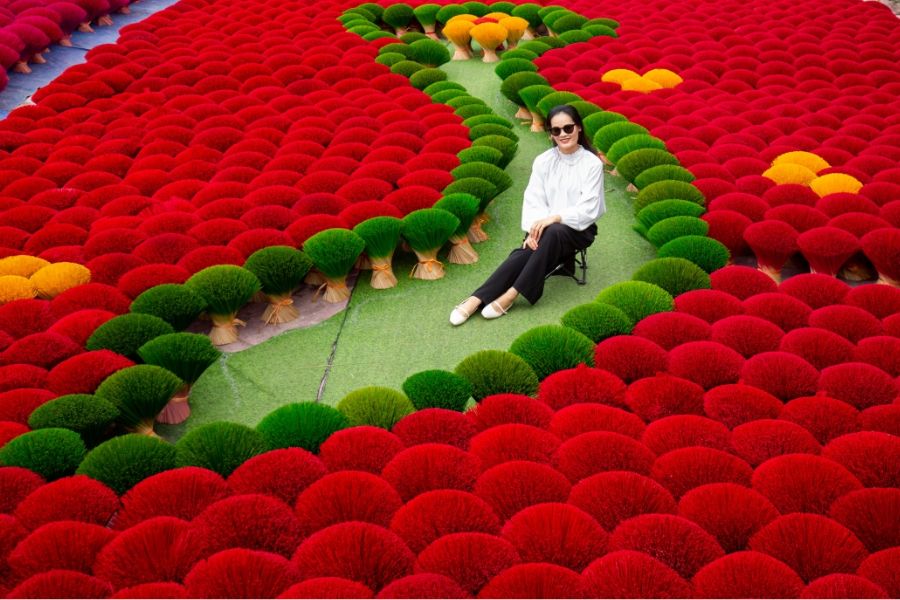
Whether it is your professional camera or simply a cellphone, the vibrant red and magenta against the “weathered” village background provides a stunning contrast. Every picture, every angle tells a different story of tradition, commitment, and beauty. If you like visual storytelling, this is your dream playground. Just make sure to respect the locals’ space and photo etiquette.
Stroll Through The Vietnamese Craft Village Streets
Aside from the incense displays, simply strolling the narrow paths of Quang Phu Cau is a delightful experience in itself. You will hear the steady rhythm of chopping bamboo, smell the fruity scent of incense powder hanging in the air, and see neighbors talking over cups of tea while collaborating in open courtyards.
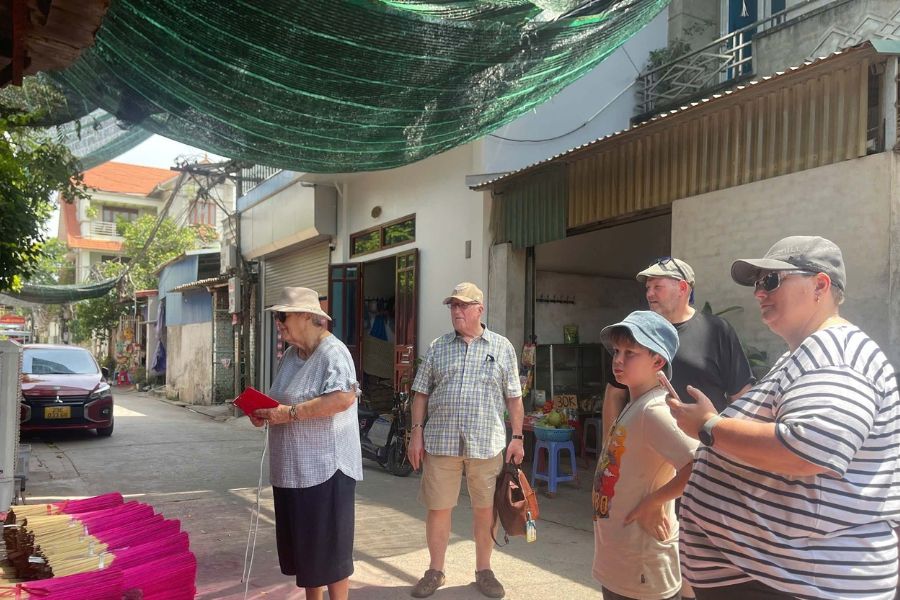
This is where tradition intersects with everyday life. Many of the homes also serve as small incense factories, and family members of all ages take part in the making. At Quang Phu Cau, children find sticks, elders sort materials, and everyone helps out to keep the tradition alive. The slower pace, the smiling faces, and the community spirit give you a taste of a Vietnam that is far from the tourist crowds – peaceful, proud, and refreshingly real. It’s in these small and uncomplicated spaces where Phu Cau really comes alive.
Entrance Fee
Quang Phu Cau Incense Village charges a small entrance and photo fee to assist with preserving the traditional craft and to pay local artisans to set up beautiful incense scenes for guests. Below is a summary for quick reference:
| Ticket Type | Price | Details |
| Entrance Fee | 50,000 VND/person | (~2 USD) Standard fee to visit the incense-making areas |
| Photography Fee | 100,000 VND/person | (~4 USD) “Gratitude fee” for the villagers who arrange incense for photos |
| Incense Souvenir (20 sticks) | 12,000 VND | (~0.5 USD) Optional purchase for visitors who want to bring home a memento |
As a note: The photo fee is sometimes cited as a small tip to the villagers to thank them for taking their time to create colorful incense bundles so guests can get the best Instagram pictures as possible.
Most of the grounds are free to enter, but you must pay the fee for access to the most photogenic areas, especially those areas with set-up bundles of incense.
Opening Hours
Quang Phu Cau Incense Village is open all year, as it is a traditional craft village in which daily life and incense production take place throughout the year. You can visit any time of the year, but the village will be at its busiest and brightest in the months before Tet (Lunar New Year), when incense is produced at its peak, and incense making changes the landscape of the village more than any other occasion.
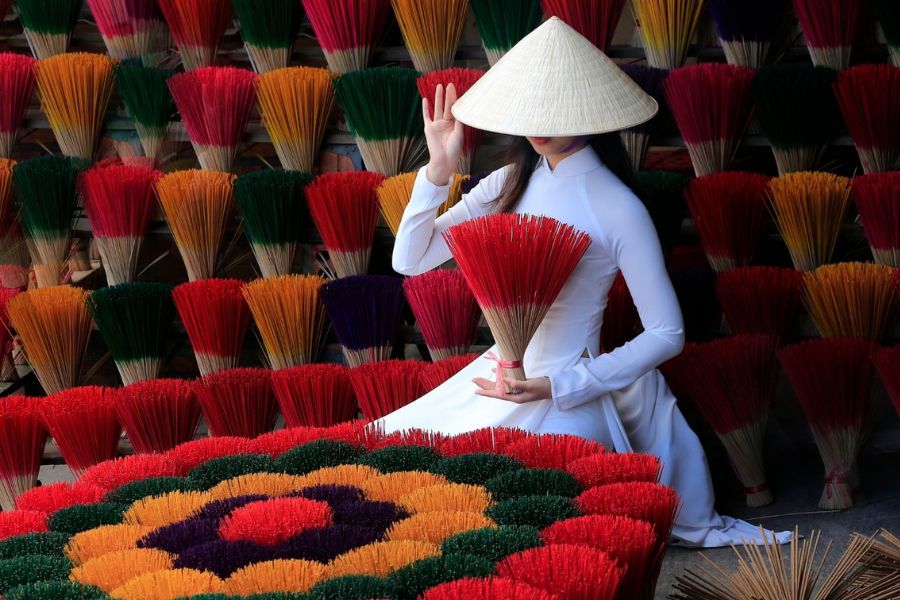
The best time to visit is on sunny days, especially in the summer in Hanoi. The golden sunlight allows for a stunning contrast against the bold reds and pinks of the incense laid out in the sun. For photography purposes, visiting between 10 AM and 12 PM when you can see the incense lying out in full production mode is the best. That’s when locals lay incense in the fullest exposure across courtyards and throughout the village.
On the other hand, if you are just there to enjoy the atmosphere or take casual photos, it does not matter what time of day you visit.
Note: Check the weather, as locals do not lay incense out for drying when it rains; therefore, wet weather is not the best time to visit if you want to experience the most iconic sights of Quang Phu Cau, the incense village.
How To Get To Quang Phu Cau Incense Village
Quang Phu Cau Incense Village is approximately 35 kilometers northwest of the center of Hanoi. As such, it is fairly straightforward to reach by motorbike, car, bus, or even by a combination of metro and bus. This is what you need to do to get to the village:
| Mode of Transport | Details | Estimated Cost |
| Motorbike | Ideal for flexible and scenic travel. Rental is easy in Hanoi. | ~120,000 VND/day |
| Private Car/Taxi | Comfortable and convenient, especially for groups. | ~400,000 – 600,000 VND/round trip |
| Bus | Budget-friendly. Take Bus No. 91 from Yen Nghia Bus Station to Quang Phu Cau. | ~9,000 – 15,000 VND |
| Metro + Bus | Take the Cat Linh – Ha Dong metro line to Yen Nghia Station, then transfer to Bus 91. | ~20,000 VND (both fares) |
Recommended route (for motorbike or car):
From the center of Hanoi ➝ National Highway 21B ➝ Provincial Road 429 ➝ Quang Phu Cau Commune.
Things to Know Before Traveling to Quang Phu Cau Incense Village
A few practical tips will help you fully experience Quang Phu Cau Incense Village. You should know about when to go, photo fees, and more:
- The village is particularly lively during Tet (Lunar New Year). It’s a really good time for you to see the bustle of the incense-making process.
- Dried incense (made incense) is typically dried on sunny days (sunny or clear), so be careful and check the weather before you go.
- For the best pictures, wear a contrasting outfit color! White, yellow, or blue – great colors to offset against bright incense sticks.
- You can also pair your visit with visits to other traditional craft villages such as Bat Trang pottery village, Thach Xa bamboo dragonfly village, or Chang Son fan-making village!
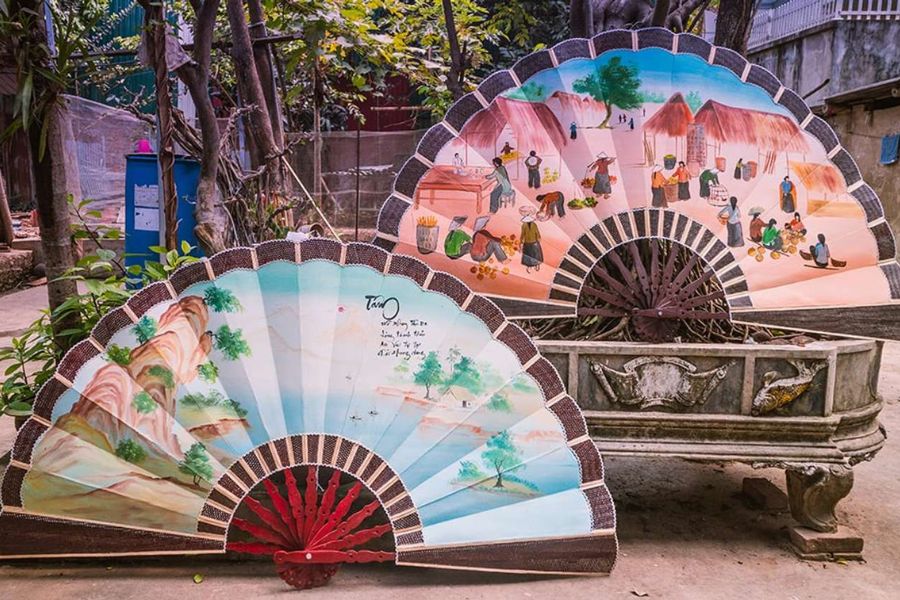
FAQs About Quang Phu Cau Incense Village
Are you thinking of going to Quang Phu Cau Incense Village? Check out some FAQs that will help you plan your trip and visit the incense village, including how to get there and when to go.
How is Quang Phu Cau different from other craft villages in Vietnam?
The village has truly unique views when the several kilometers of pink and red incense sticks are piled together to dry in the sun, creating an otherworldly effect beyond comparison in Vietnam.
What time of day is best for photography?
Early morning (between 8:00 AM and 10:00 AM) is when the light is optimal and you’ll see the most active incense drying.
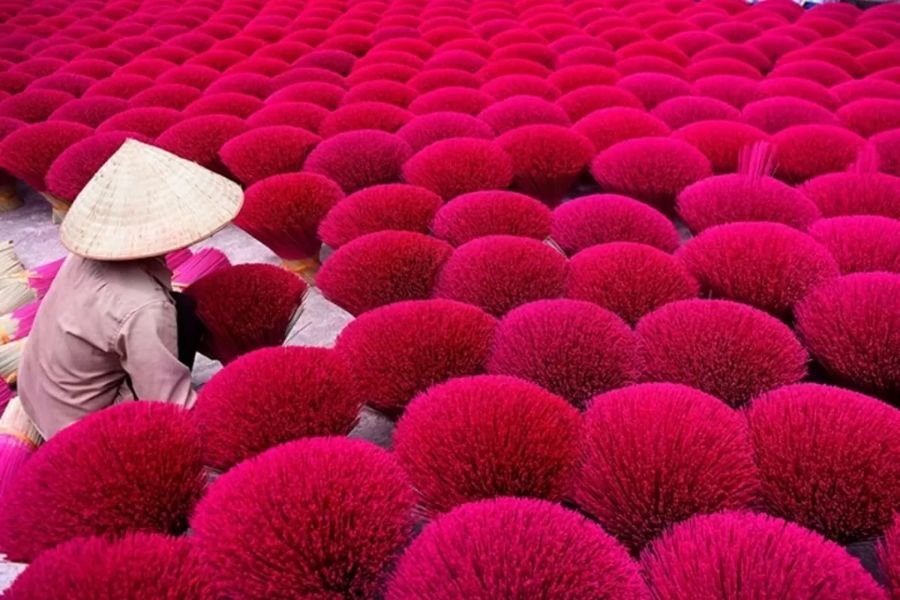
How long should I plan my time in the village?
Most visitors spend around 1.5 – 2 hours in the village when taking photos, and especially if joining a short cultural tour.
Can families with kids and elderly travelers access the village?
Yes, the roads are walkable and most of the incense yards are flat, although private cars provide the most convenient transport option.
What should I wear when visiting the village?
Wear comfortable clothes and a hat or sunscreen if you plan to walk around and take photos in the sun.
Final Thoughts: Is Quang Phu Cau Incense Village Worth Visiting?
Quang Phu Cau Incense Village gives you a unique cultural experience, with bright red incense sticks, traditional crafts, and welcoming people. You are sure to have an unforgettable experience. If you’re a photographer, cultural lover, or just curious about your heritage, this village will give you beautiful sights and meaningful connections. Let Seni World guide you with smiles and excitement while exploring the beautiful Vietnam!









